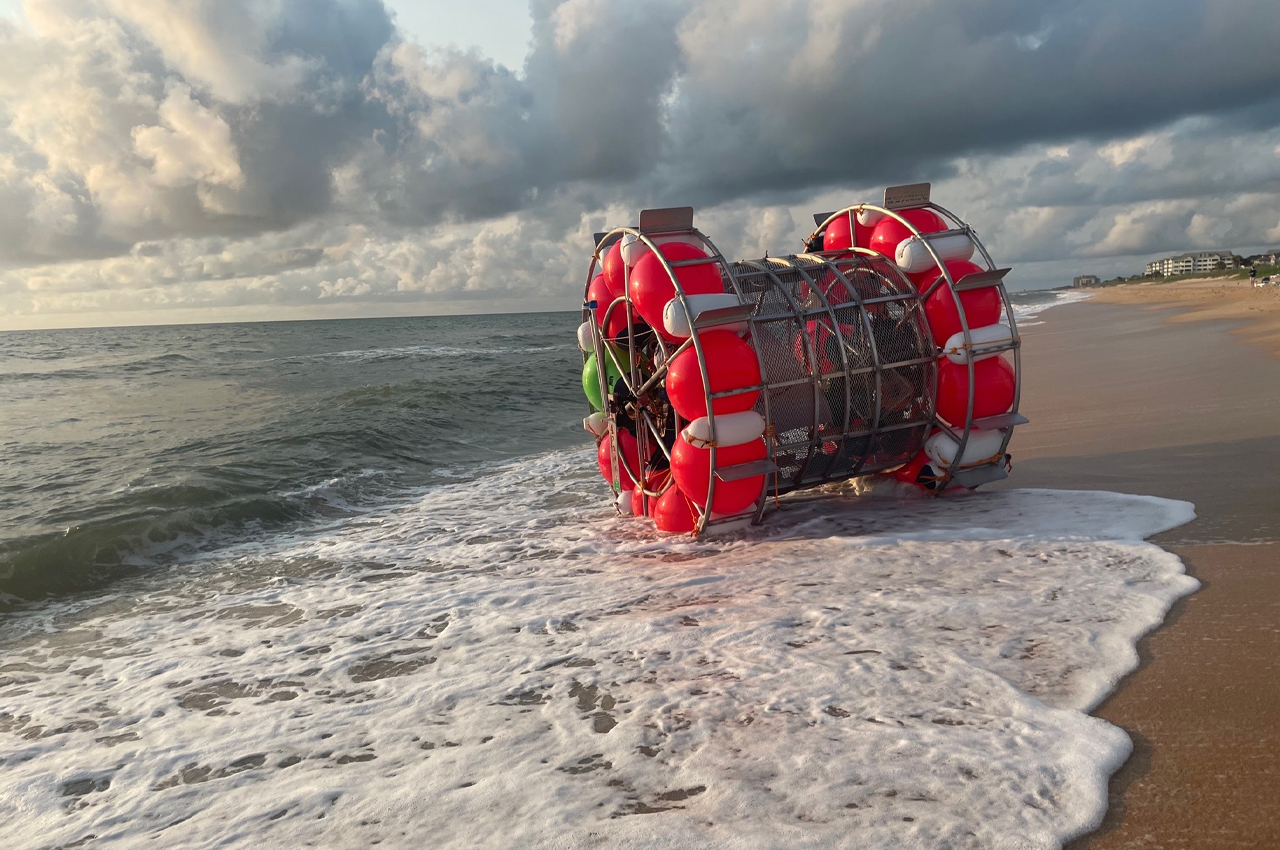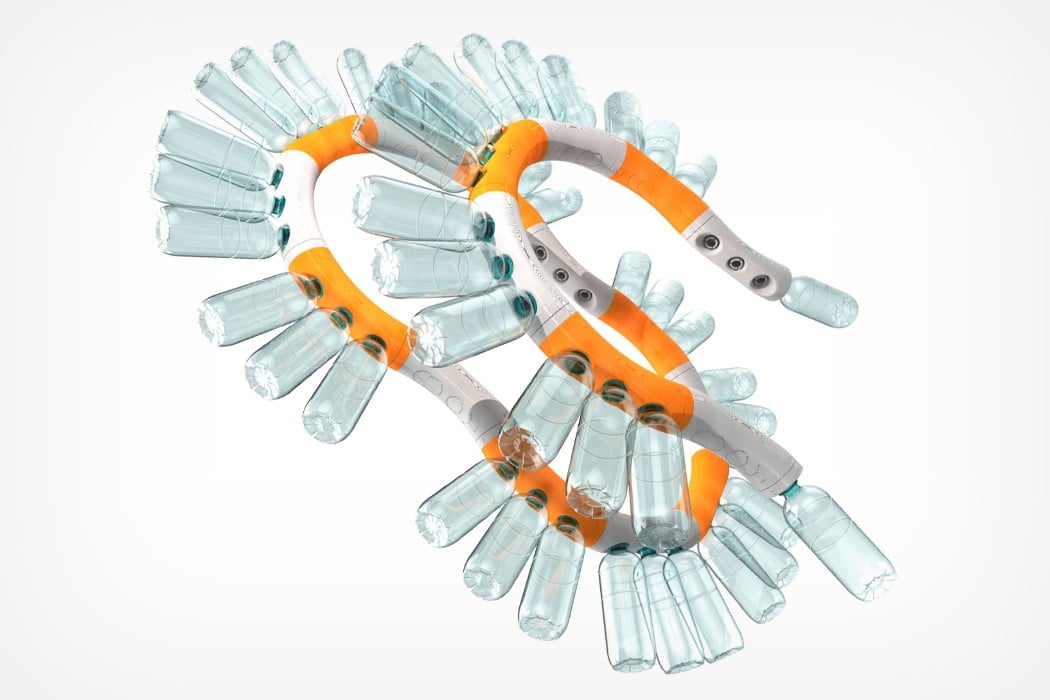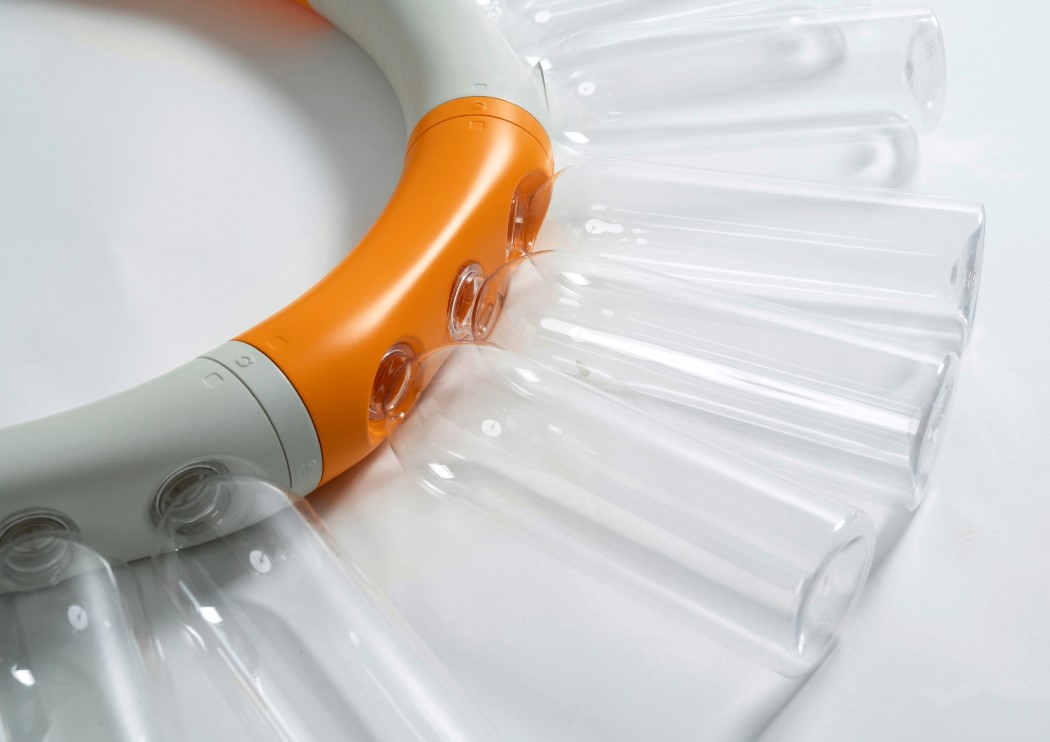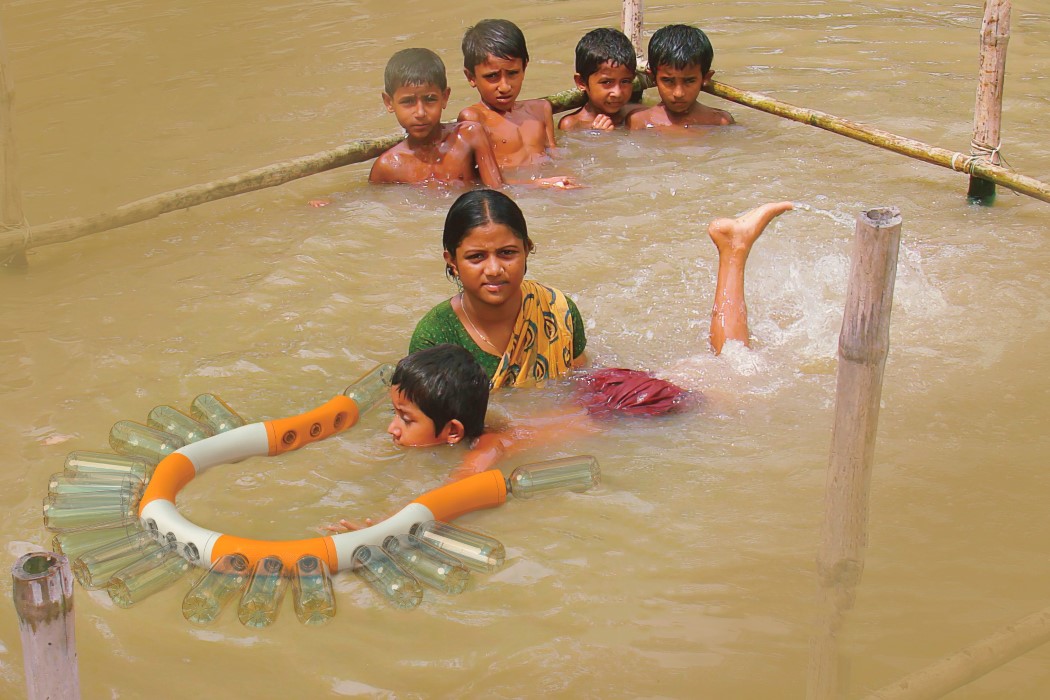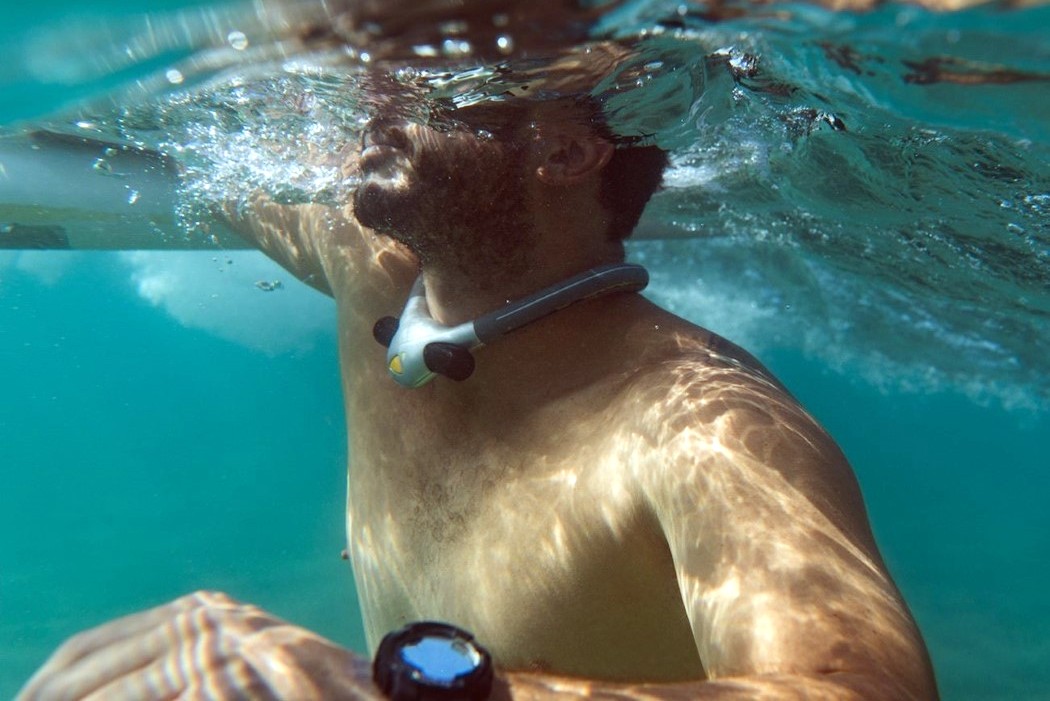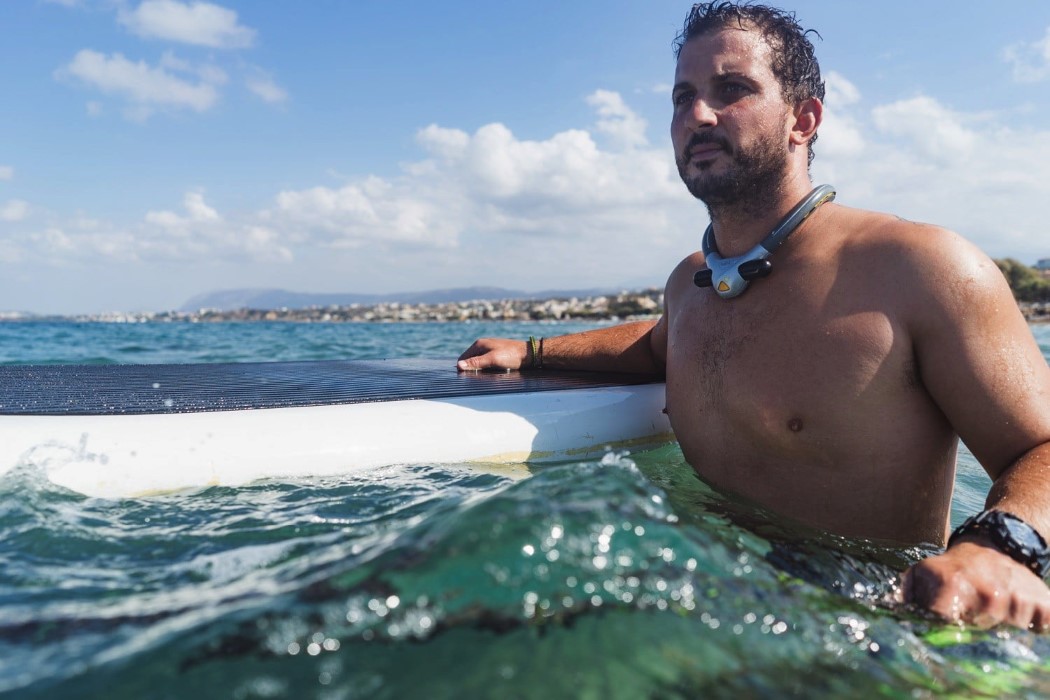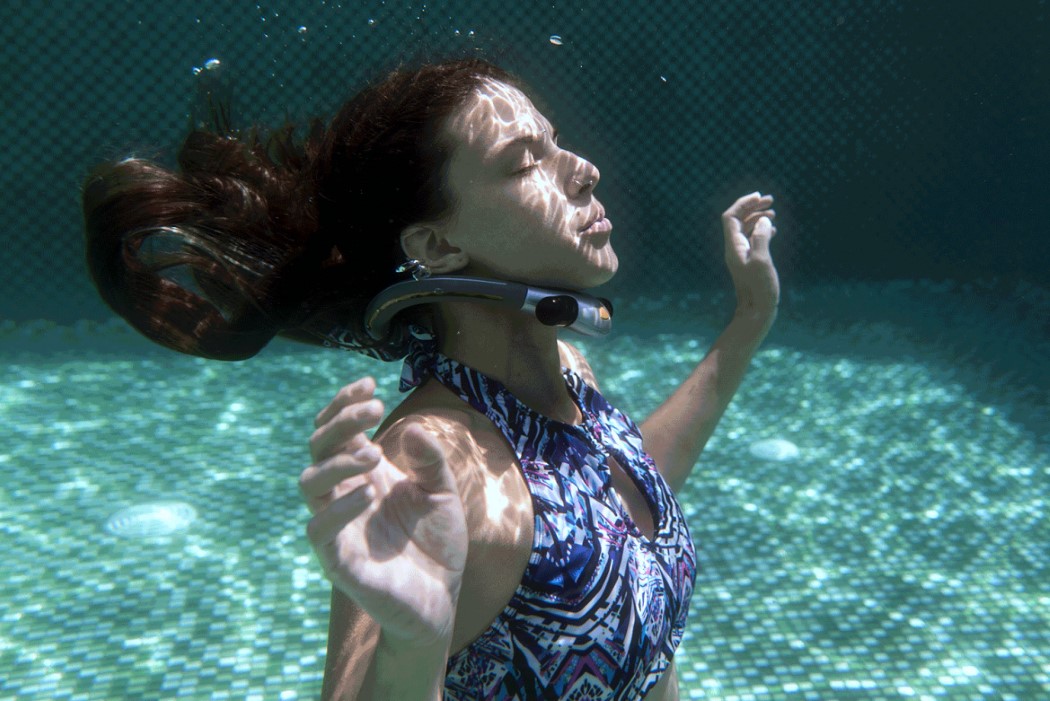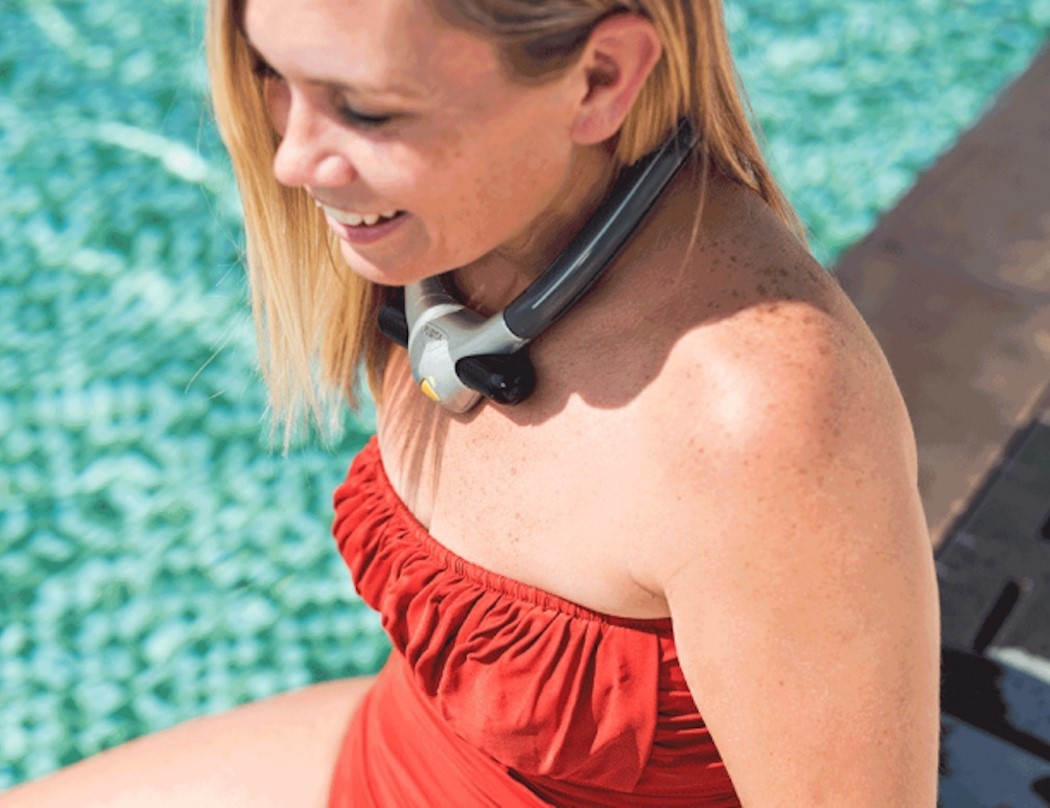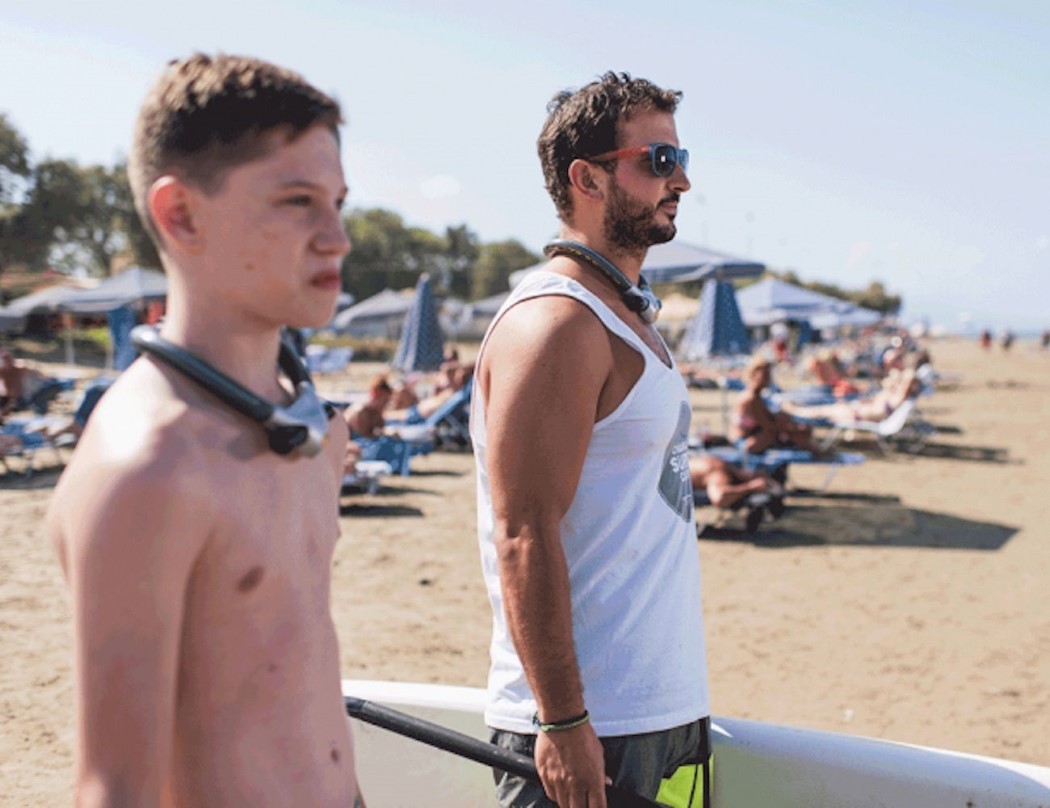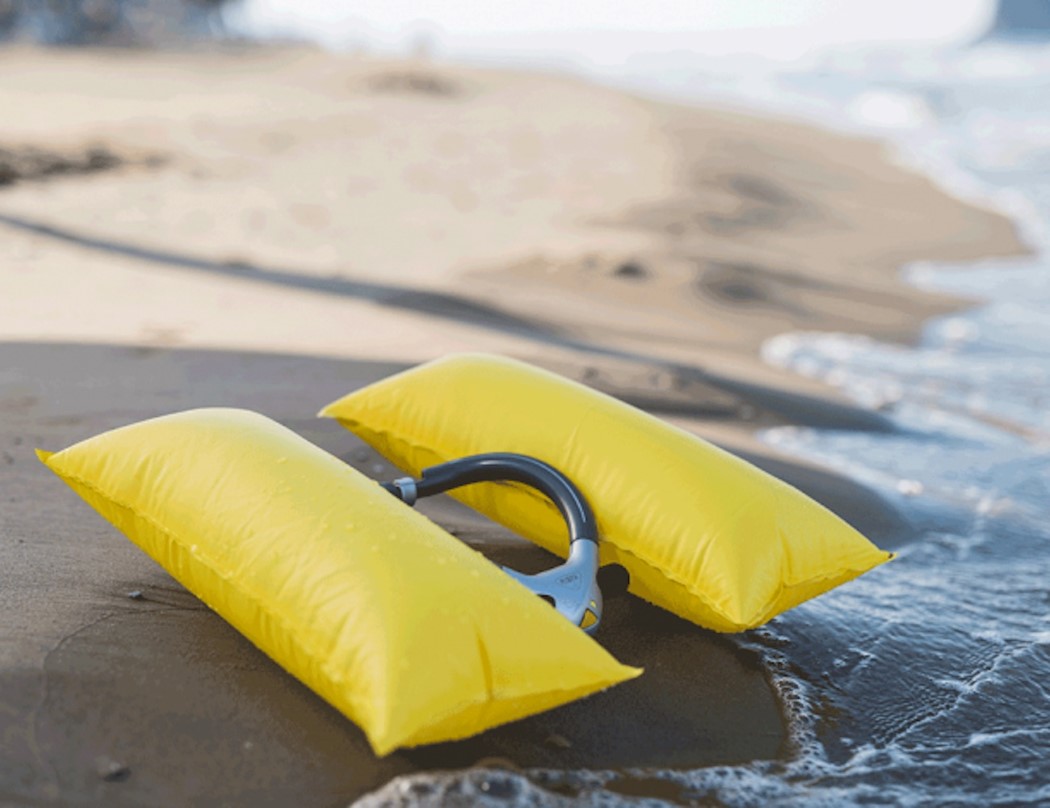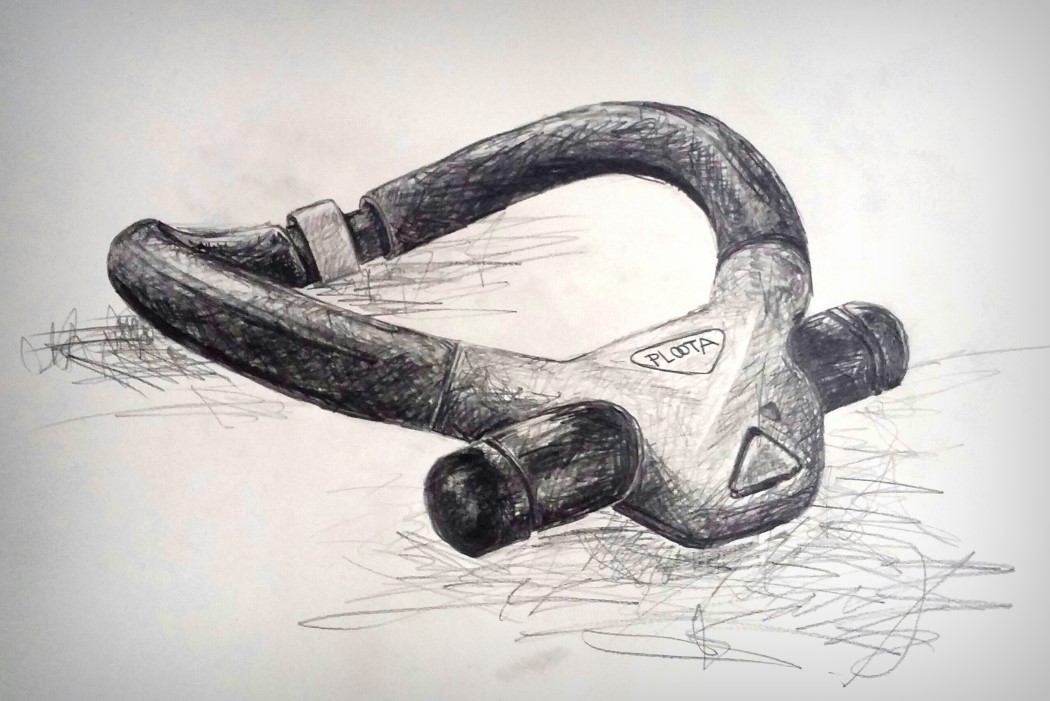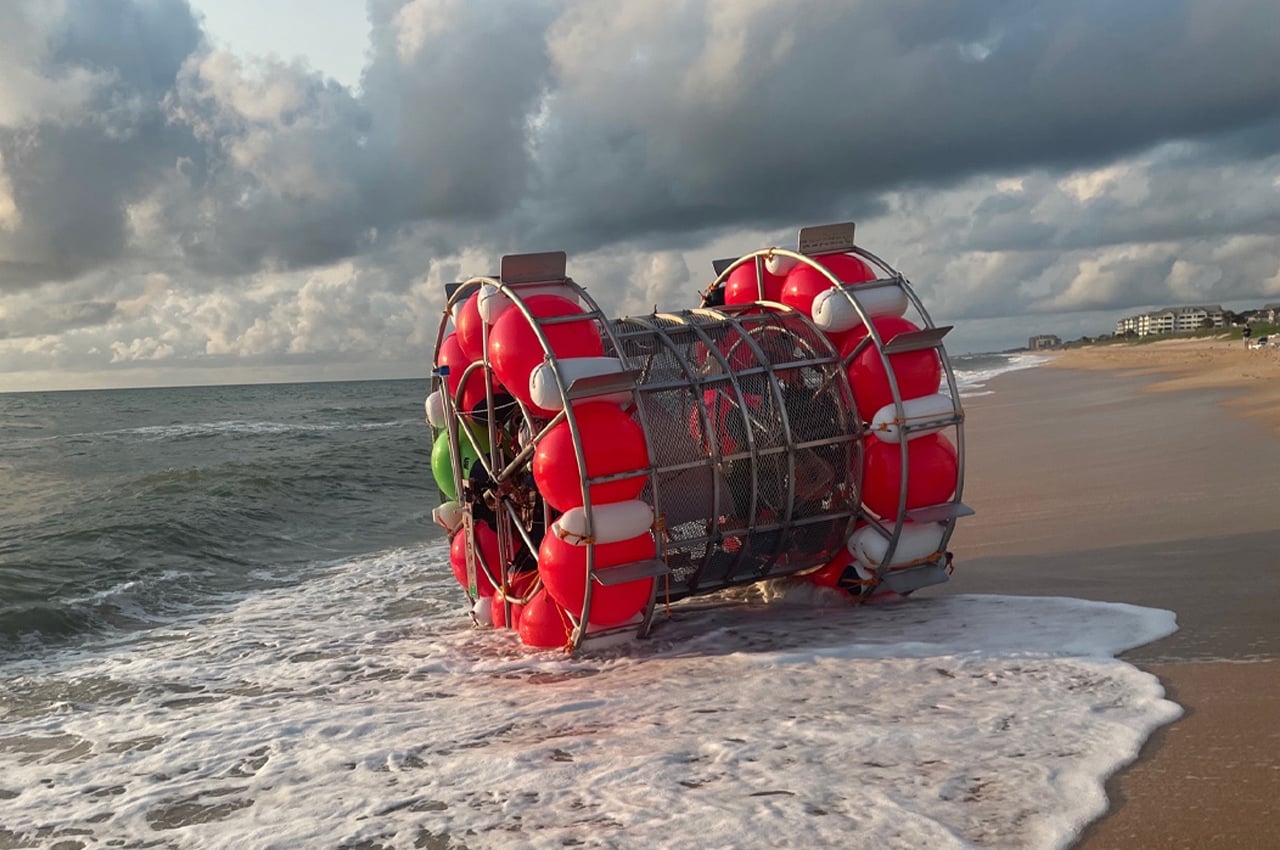
Reza Baluchi has run from Los Angeles to New York City twice and around the perimeter of the United States, accumulating 11,720 miles along the way. With all of this already under his belt, walking from St. Augustine, Florida to New York City over the Atlantic Ocean, not in a boat, but in a DIY floating bubble seemed easy. The floating bubble, dubbed “hydropod,” would have floated Baluchi all the way to the Hudson River’s shoreline if his trek wasn’t cut short some 30 miles south of his launch point. Mr. Baluchi, a former professional cyclist, said that he was hoping to use the attention from his trip to raise money to help homeless people and for other charitable causes. Over the years, he said, he has received puzzled reactions — including from the Coast Guard — after performing similar stunts on the water.
Designer: Reza Baluchi
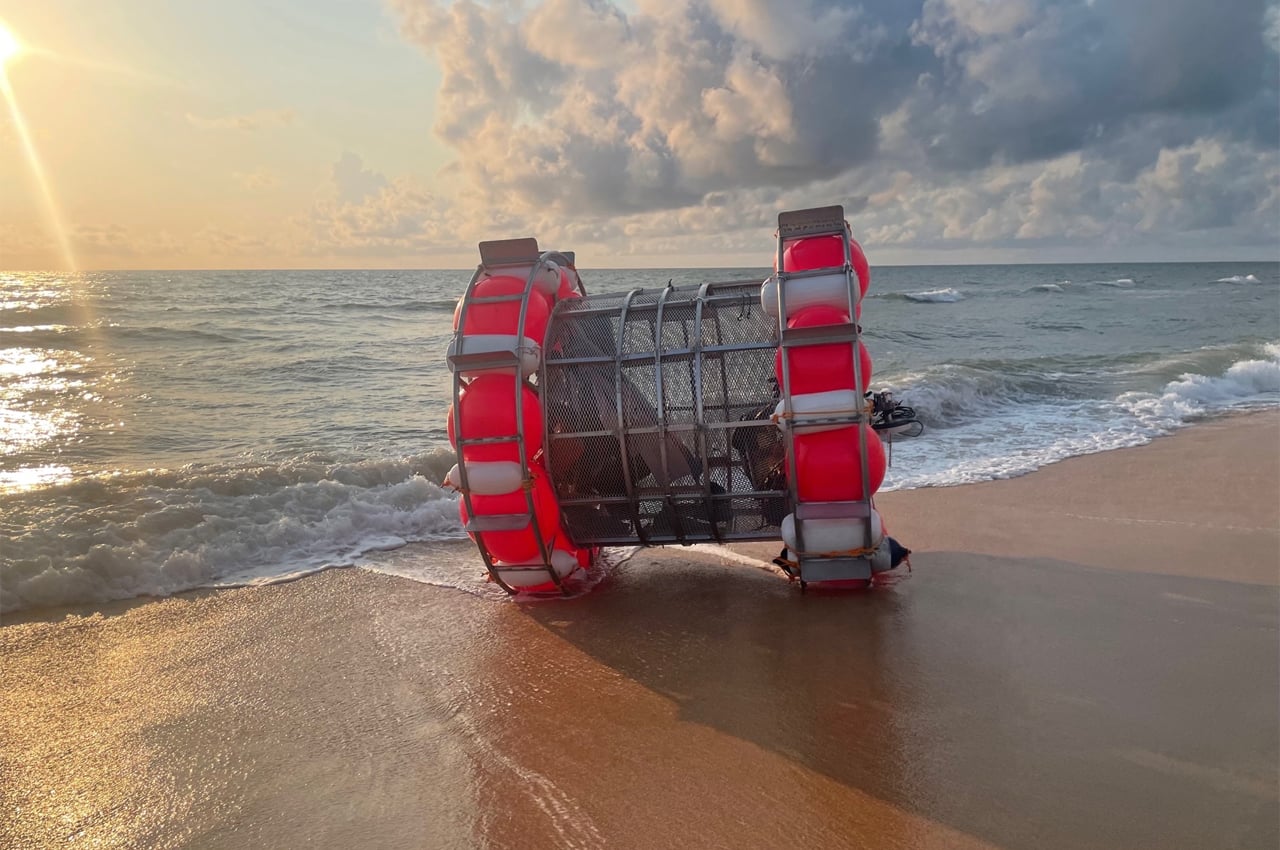
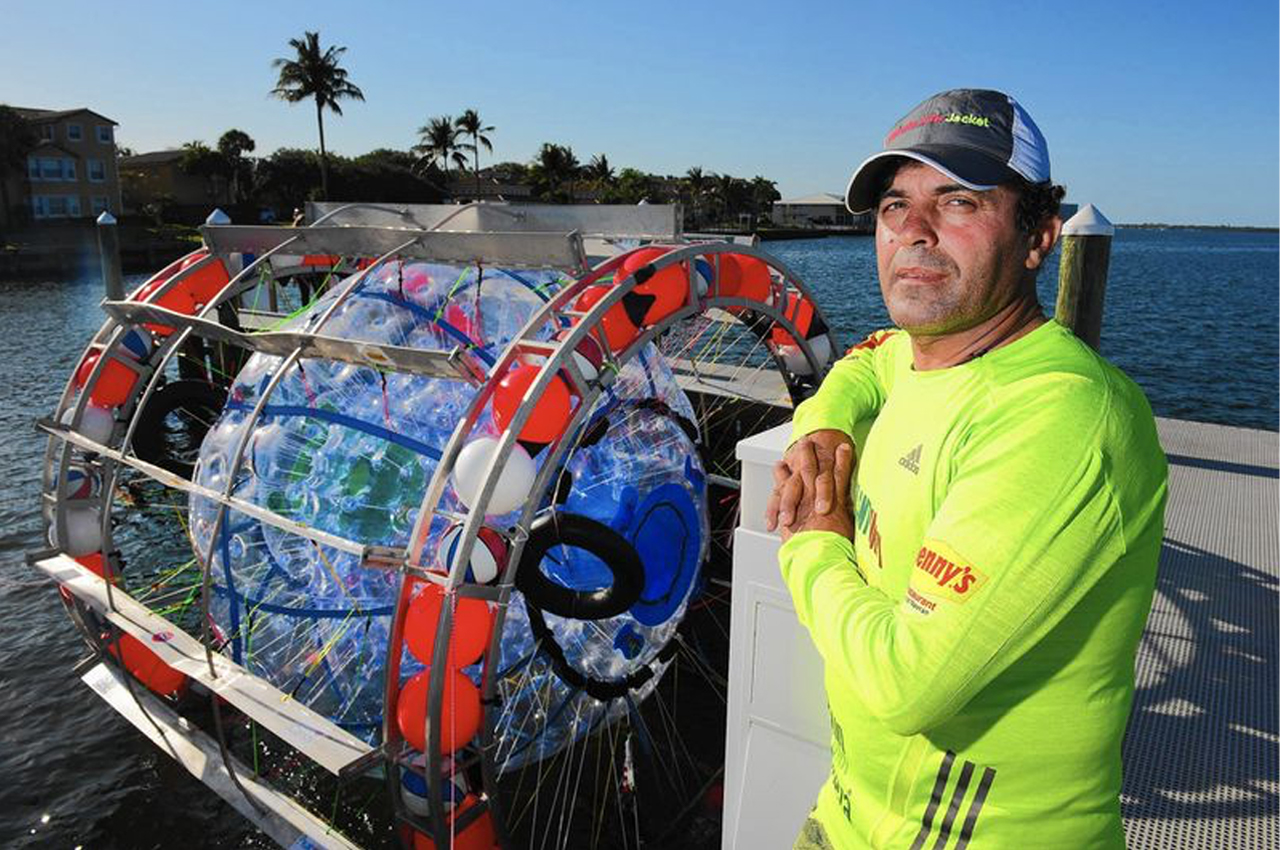
Reza Baluchi standing beside his handcrafted hydropod, which he had spent thousands of dollars and nearly a decade on making improvements. Saturday morning, Flagler County Sheriff’s Office responded to multiple calls describing a cylindrical vessel washed ashore in St. Augustine’s Hammock area. Reporting that Baluchi was found safe and without any injuries, he felt compelled to beach his makeshift floating device after discovering that some of his safety and navigation equipment had been stolen. While the items were eventually recovered, it’s currently undetermined if Baluchi plans to re-commence his journey across the Atlantic. A decade was spent on making improvements to Baluchi’s hydropod, equipped with essential safety items like “a satellite phone, a water filtration system, a solar array, neoprene wetsuits, and a stockpile of granola and ramen noodles,” according to The Times.
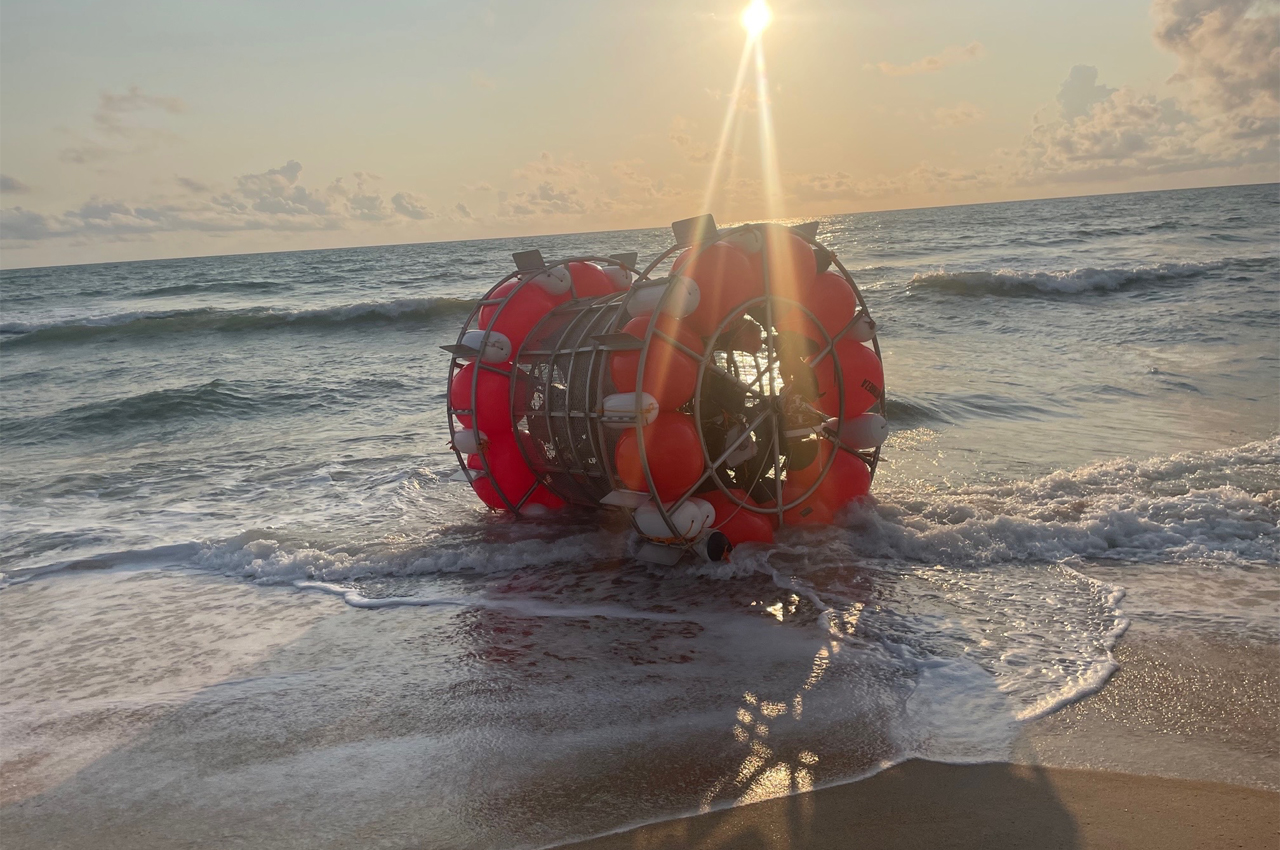
The final form of Baluchi’s hydropod features cylindrical steel grating and two support additions made out of buoys. Reza Baluchi was granted political asylum in the United States during his 20s after enduring imprisonment and torture in his home country. Since his big move across the Atlantic Ocean, he’s raised money for unhoused communities and other charitable causes like various public services. In walking from St. Augustine to New York City across the Atlantic in his hydropod, Baluchi hoped to raise money for first responders, sick children, and unhoused individuals.
